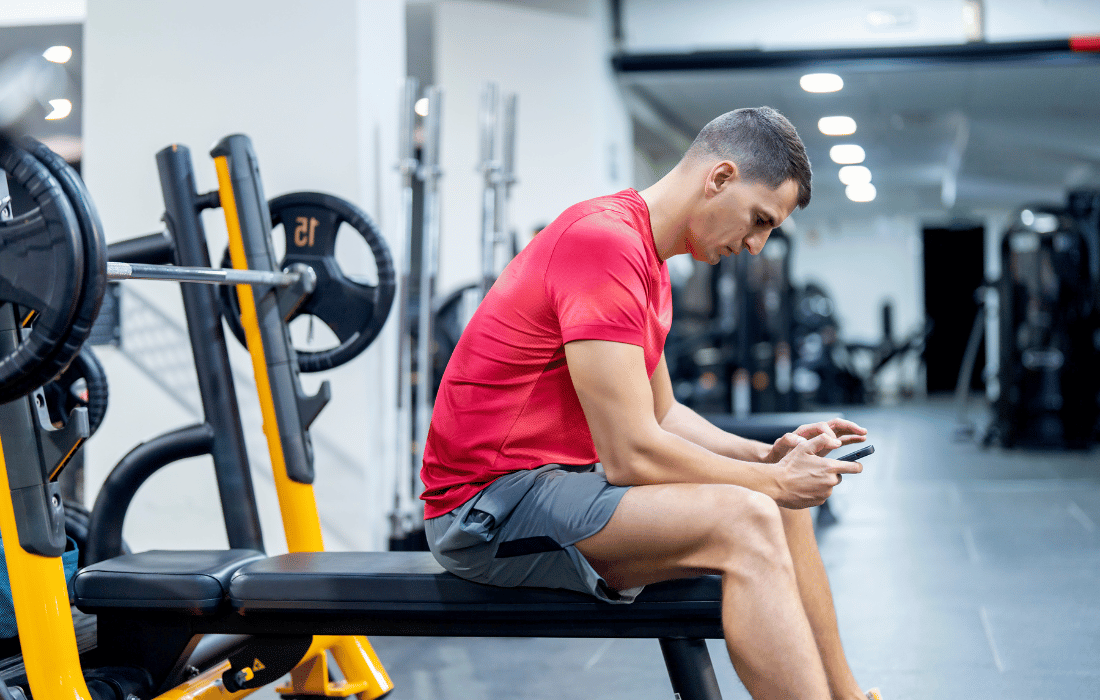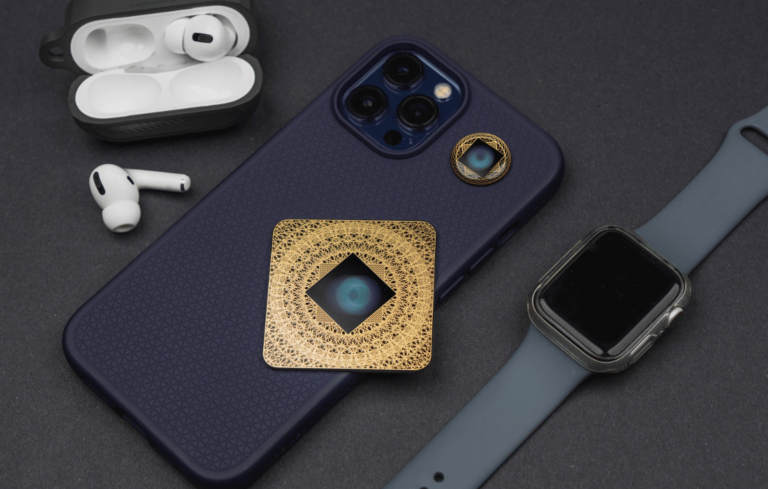In the age of technology, mobile phones have become essential tools for daily life. From social media to navigation apps, these devices provide countless conveniences—but they also bring hidden costs. For athletes, the toll of excessive phone use can be significant, affecting mental focus, physical recovery, and overall performance. This article explores the interplay between mobile phone dependence, screen time, blue light exposure, electromagnetic fields (EMF), and their cumulative impact on athletic potential.
Understanding Mobile Phone Dependence (MPD)
MPD, also referred to as smartphone addiction or problematic mobile phone use, manifests as a compulsive need to engage with one’s mobile device. Individuals exhibiting MPD often prioritize phone interactions over other activities, leading to disruptions in daily routines and interpersonal relationships. Studies have indicated that individuals using mobile phones for more than four hours daily are potential candidates for MPD.
Individual Factors Affecting Athletic Performance
Athletes are subjected to various stressors, including rigorous training schedules, competition pressures, academic responsibilities, and personal expectations. To cope, some may turn to mobile phones as a means of escapism. However, excessive use can lead to:
Emotional Disturbances: Over-reliance on mobile devices can result in increased feelings of anxiety and depression. The constant need to check notifications or engage in online activities can create a cycle of dependency, exacerbating stress levels.
Cognitive Impairments: Prolonged screen time is associated with reduced attention spans and impaired cognitive functions. For athletes, this translates to decreased focus during training and competition, adversely affecting performance.
Sleep Disruptions: Engaging with mobile phones, especially before bedtime, can interfere with sleep patterns. Poor sleep quality hinders recovery and diminishes overall athletic output.
Environmental Factors Influencing Athletic Performance
The environment in which an athlete operates also plays a crucial role:
Team Dynamics: Excessive mobile phone use can lead to social isolation, affecting team cohesion. Strong interpersonal relationships within a team are vital for synchronized performance and mutual support.
Coach-Athlete Relationships: Dependence on mobile devices may hinder effective communication between coaches and athletes, leading to misunderstandings and reduced trust. A positive coach-athlete relationship is essential for motivation and guidance.
Neurobiological Mechanisms Linking MPD and Athletic Performance
The brain’s reward system is central to understanding MPD’s impact. Engaging with mobile phones stimulates dopamine release, reinforcing the behavior and creating a loop of dependency. Over time, this can alter brain regions responsible for attention, decision-making, and impulse control, all critical for athletic excellence.
Theoretical Models Explaining MPD’s Impact
Two primary models shed light on how MPD affects athletes:
Social Cognitive Model of Self-Regulation: This framework suggests that athletes with high self-regulation can manage their mobile phone use effectively, balancing it with training and rest. Conversely, those with lower self-regulation may succumb to MPD, leading to decreased performance.
Integrative Model of Self-Control: This model posits that self-control comprises capacity, motivation, and effort. Athletes with diminished self-control may prioritize immediate gratification from mobile phone use over long-term goals, such as achieving peak performance.
The Dark Side of Screen Time
Prolonged screen time is one of the most pressing issues for modern athletes. From video analysis sessions to social media updates, screens are almost unavoidable in professional sports. However, their overuse comes with significant consequences.
Spending hours staring at screens can reduce cognitive efficiency and increase mental fatigue. Screen time often leads to multitasking—a quick scroll on Instagram during a water break, for example—which impairs focus and leads to subpar performance. Research shows that multitasking can reduce efficiency by as much as 40%, a critical cost for athletes striving to optimize every moment of preparation.
The constant engagement with screens also impacts physical recovery. Scrolling late at night disrupts natural circadian rhythms, particularly when combined with blue light exposure. Recovery windows that should prioritize sleep and relaxation are instead consumed by the mental stimulation of endless scrolling, undermining an athlete’s ability to fully recharge.
Screen time has also been shown to impact memory retention, a key factor for athletes who need to internalize plays, strategies, or performance reviews. Athletes who spend significant portions of their day engaged in digital distractions may find it harder to retain and apply the knowledge they need for success.
The Migraine Connection: Excessive Scrolling and Chronic Headaches
Recent findings reveal that scrolling on mobile phones can increase the risk of migraines. Athletes are no strangers to pushing through discomfort, but frequent migraines can be debilitating, disrupting training schedules and competitions.
The combination of screen-induced eye strain, poor posture while scrolling, and prolonged exposure to EMFs can create a perfect storm for headaches. Athletes who rely on phones for strategic planning, social media management, or leisure are at higher risk of developing chronic migraines.
Scrolling often leads to “text neck,” a posture issue caused by craning the neck forward. Over time, this can result in tension headaches, reduced spinal mobility, and even long-term musculoskeletal imbalances—serious concerns for athletes who depend on physical alignment.
Blue Light Exposure: A Hidden Recovery Saboteur
Blue light emitted by screens may seem harmless, but it has profound effects on the human body. For athletes, whose recovery depends on high-quality sleep, the impact of blue light is especially damaging.
Blue light suppresses the production of melatonin, a hormone responsible for regulating sleep. Even short exposure before bedtime can delay sleep onset and reduce sleep quality, leading to less restorative rest. Athletes require deep sleep to repair muscles, regulate cortisol levels, and consolidate skills learned during training. Poor sleep impairs all of these functions, reducing performance gains.
Blue light exposure at night can elevate cortisol levels, throwing off the body’s natural stress-response cycle. For athletes, this hormonal imbalance can lead to chronic fatigue, reduced endurance, and an increased risk of overtraining syndrome.
To combat blue light exposure, athletes can use blue-light-blocking glasses during evening screen time, enable “night mode” on devices to reduce blue light emissions, and set a hard cut-off for screen use at least one hour before bed.
The EMF Connection: A Silent Disruptor
Electromagnetic fields (EMF) from smartphones, Wi-Fi routers, and other devices are another growing concern. While EMFs are invisible and intangible, their effects on the human body are increasingly studied, and athletes may face unique risks.
Prolonged exposure to EMFs has been linked to oxidative stress, a condition where free radicals outnumber antioxidants in the body. Oxidative stress can lead to inflammation, cell damage, and fatigue—all detrimental to athletic performance. Additionally, EMFs have been shown to disrupt the body’s natural electrical signaling, which could impact reaction times and neuromuscular coordination.
Emerging research suggests that EMF exposure may contribute to dehydration by altering the permeability of cell membranes. For athletes, who rely on precise hydration levels to optimize performance, this is a critical concern. Dehydration not only affects endurance and strength but also increases the risk of injury.
Athletes can take steps to minimize EMF exposure, such as using airplane mode during workouts and sleep, keeping devices away from the body when not in use, and investing in EMF-modulating products, such as those offered by Aires Tech, designed to neutralize harmful radiation.
Proactive Solutions for Athletes
Athletes looking to mitigate the negative effects of smartphone dependence, blue light exposure, and EMF radiation need a multifaceted approach that prioritizes awareness, balance, and actionable changes. These solutions are not about eliminating technology but about creating boundaries and practices that protect performance and health.
1. Establish Phone-Free Zones and Times
Create designated phone-free periods during the day, such as during the first and last 30 minutes of your day or meals. These intentional breaks allow the mind and body to recharge without digital distractions. For example, during training, placing phones in airplane mode can eliminate unnecessary interruptions while also reducing EMF exposure.
2. Prioritize Sleep Hygiene
Protecting sleep is crucial for recovery, and reducing screen time before bed is one of the most effective ways to improve sleep quality. Use blue-light-blocking glasses in the evening, enable “night mode” on devices, or commit to a screen-free wind-down routine. Consider substituting nighttime scrolling with calming activities like meditation, reading a physical book, or journaling.
3. Leverage Technology Mindfully
Instead of eliminating technology, use it to your advantage. Many apps can track screen time and set daily limits to ensure that phone usage remains intentional. Tools like focus timers or mindfulness apps can also help athletes build healthier relationships with their devices.
4. Minimize EMF Exposure
To reduce EMF exposure, athletes can adopt simple practices like keeping phones in airplane mode when not actively in use, avoiding carrying phones in pockets or sports bras, and unplugging Wi-Fi routers at night. Products like Aires Tech Lifetune devices effectively neutralize harmful radiation without sacrificing convenience.
5. Optimize Posture and Movement
Counteract the negative effects of prolonged phone use by incorporating exercises and stretches that improve posture and strengthen the neck and shoulders. Yoga and mobility drills can help correct “text neck” and restore proper alignment, reducing the risk of injuries linked to poor biomechanics.
6. Digital Detox Days
Consider implementing regular digital detoxes, such as one day per week without phones, to reset mental and emotional focus. These detox days allow athletes to reconnect with their goals and environment without the distractions of notifications or screen-based activities.
7. Minimize EMF Exposure with Aires Tech
To reduce EMF exposure, athletes can adopt simple practices like keeping phones in airplane mode when not actively in use, avoiding carrying phones in pockets or sports bras, and unplugging Wi-Fi routers at night. For additional protection, athletes can use products like Aires Tech EMF shields. Aires Tech devices are scientifically designed to neutralize the harmful effects of EMF radiation, helping athletes safeguard their health without sacrificing connectivity. This extra layer of protection ensures athletes can use technology responsibly without compromising their recovery or performance.
8. Focus on Recovery and Regeneration
Recovery should be a top priority for every athlete. Incorporating grounding techniques, such as spending time barefoot in nature, can help counteract some of the effects of EMF exposure. Similarly, prioritizing antioxidant-rich foods can combat oxidative stress caused by blue light and EMFs.
9. Set Clear Boundaries for Social Media
Social media is a powerful tool for athletes to build their brands and connect with fans, but it can also become a source of stress. Setting boundaries—such as limiting daily social media use to a specific time window—can help athletes avoid the mental fatigue that comes with constant engagement.
Conclusion: Reclaiming Control
Mobile phones are indispensable tools, but their overuse can significantly hinder athletic performance. By understanding the risks of screen time, blue light, EMFs, and mobile phone dependence, athletes can take control of their digital habits and unlock their full potential. Awareness, balance, and intentional action are the keys to thriving in a digital world without compromising health and performance. Athletes who embrace these principles can not only enhance their performance today but also protect their long-term health and careers.









